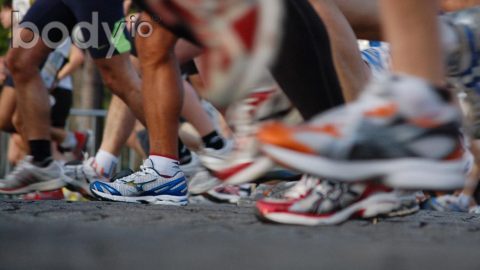hen I was in my mid-teens, I started to pay attention to my pinky toes. (Yes, I had way too much time on my hands.) Anyway, one day while watching television, it dawned on me that I could slightly move each of my toes somewhat independently, except for my pinky toes. More specifically, whenever I moved the rest of my toes, the pinky toes just stuck to the bigger toe next to it. I was unable to separate the movement of my pinky toes from the rest of the toes.
This frustrated me. Why couldn’t I move just my pinky toes? Shouldn’t there be an independent nerve connection linking my brain exclusively to the pinky toes?
I decided to try to find out. After all, I didn’t want some distant descendants of mine to be born without their pinky toes!
I first focused on the pinky toe of my right foot. Whenever I sat down to relax or watch television, and without anyone knowing the wiser, I would concentrate on trying to move my right foot’s pinky toe. I really didn’t know what I was doing. How do you concentrate on moving a muscle you have no connection with and have never tried to use? I might as well have been trying to move my sister’s pinky toe with just my mind.
Before I knew it, weeks had passed without any movement. I didn’t give up. I tried at least a few times every day. Even before I went to sleep, I would spend a few minutes working on my pinky project.
After about three months of trying, I finally got movement! It was just a small pinky toe flicker, but it was a definite response to my efforts to move it. Encouraged, I kept at it. After another month, my mental connection with my pinky toe muscles was stronger; I was much better at making it move independent of all my other toes. By the middle of the fifth month, my mental connection with my pinky toe muscles was as sound as my connection with my thumb muscles.
I turned my attention to the pinky toe of my left foot and repeated the process. After a little over five months of trying, I developed a firm mental connection to the pinky toe of my left foot. To this day, with a little concentration, I can move the pinky toe of each foot independently of the other toes or in unison.
So, how does my experience with connecting with my pinky toes apply to weight training, getting stronger, and building muscle?
Getting Stronger
In a study of men and women engaged in an eight-week resistance training program, measurements of muscles after eight weeks revealed changes in the fiber makeup of the muscles’ hormone level concentrations and increases in the weight lifted. However, there were no significant changes in muscle size. The gains in strength were not attributable to muscle growth but rather to the recruitment of more muscle fibers[1].
When I started weight training about two years ago, my ability to lift was limited by the muscle fibers that my brain was able to activate. Up to that point, my brain only needed enough muscle fiber recruitment to accomplish basic daily tasks. Of all the muscle fibers I had available, my brain was probably only accustomed to activating 60% of them; there was no need to activate more.
Once I started to do weight training consistently, I began gaining strength, but those early strength gains in the first four to five months were not due to significant muscle growth. My brain found and activated more connections to muscle fibers in order to move heavier weight. Just like my experience with establishing a mind-muscle connection to my pinky toes, this process took time. Most of the progress in the first two-thirds of my first year was due to getting better at muscle fiber recruitment.
I have heard others talk about focusing on the mind-muscle connection while lifting. To me, it seems that they generally mean paying attention to the flexing and contracting of the muscles during a lift. The experience with my pinky toes made me realize that building the mind-muscle connection is much more than that. It’s actually the process of demanding and growing active nerve connections to an increasing number of muscle fibers, similar to finding and activating my mind connection to my pinky toes.
To me, this highlights the importance of doing compound lifts. Compound lifts like squats, deadlifts, bench presses, bent over rows, pull-ups, and overhead presses require that many more muscle groups be involved. As you do these types of lifts and slowly increase the weight, you demand a much broader recruitment of additional muscle fibers. The resulting mind-muscle connections link to a larger number of muscle fibers that your brain can recruit in a lift.
Getting Stronger and Building Muscle
Each of us has a limited number of muscle cells (i.e., myofibers). As more and more of these muscle fibers are recruited as a result of weight training, fewer and fewer sleepy ones are available to wake up. Continuing to lift heavier and heavier weight or a greater overall volume of weight means that muscles have to grow.
Muscle growth (i.e., hypertrophy) appears to be linked to another form of cellular recruitment. Each muscle cell is surrounded by a protective film or sheath (i.e., the basal lamina). Outside the muscle cell but inside the sheath are a large number of skeletal muscle satellite stem cells. Weight training causes damage and micro-tears in muscle tissue. When this happens, the satellite stem cells within the surrounding protective sheath of the muscle cell start to multiply and produce offspring stem cells (i.e., myoblasts) that target and fuse with the damaged muscle tissue as well as muscle fibers nearby[2-4]. Some of these satellite stem cells provide a supply of new cell nuclei, allowing the muscle fiber to engage in more protein synthesis[5]. This process is exactly what Carb Shock™ targets[6]. The insulin spike produced by Carb Shock gets protein to your muscles fast and facilitates protein synthesis[7] and muscle repair via the satellite stem cells[8]. The expanding layers of new muscle tissue make the muscle bigger.
Both muscle growth and increasing muscle fiber recruitment occur during weight training. However, the increase of muscle fiber recruitment appears to be more dominant in the beginning. The lesson from the pinky toes is that both processes take time.
Just like my efforts at waking up my pinky toe muscles, nothing happens unless you keep at it.
As I near the end of my second year of lifting, I have seen more muscle growth and increases in size as the weight and volume I can handle goes up. I am not huge, but I definitely see improvement. Eighty percent of my time is still spent focused on compound lifts. Lately, my satellite stem cells have been busy little beavers. Supplementing with Carb Shock over the past six weeks has helped me improve my squat weight from about 250 lb. to 305 lb.; my bench press has also risen from 245 lb.to 275 lb.
With regard to my squat improvement, I really can’t give Carb Shock all the credit. My squats are certainly helped by the stabilizing force of my muscular, fully engaged pinky toes.
[expand title=”References (click to expand)”]
- Staron, R. S., Karapondo, D. L., Kraemer, W. J., Fry, A. C., Gordon, S. E., Falkel, J. E., … & Hikida, R. S. Skeletal muscle adaptations during early phase of heavy-resistance training in men and women. Journal of Applied Physiology, 1994; 76(3), 1247-1255.
- Collins, C. A., Olsen, I., Zammit, P. S., Heslop, L., Petrie, A., Partridge, T. A., & Morgan, J. E. Stem cell function, self-renewal, and behavioral heterogeneity of cells from the adult muscle satellite cell niche. Cell, 2005; 122(2), 289-301.
- Morgan, J. E., & Partridge, T. A. Muscle satellite cells. The International Journal of Biochemistry & Cell Biology, 2003; 35(8), 1151-1156.
- Petrella, J. K., Kim, J. S., Mayhew, D. L., Cross, J. M., & Bamman, M. M. Potent myofiber hypertrophy during resistance training in humans is associated with satellite cell-mediated myonuclear addition: A cluster analysis. Journal of Applied Physiology, 2008; 104(6), 1736-1742.
- Charge, S. B., & Rudnicki, M. A. Cellular and molecular regulation of muscle regeneration. Physiological Reviews, 2004; 84(1), 209-238.
- Carb Shock Notes from Kiefer’s Insulin Timing Tricks Webinar Part 1. The BBJ Caveman. 2014, October 20; https://bjjcaveman.com/2014/10/20/carb-shock-notes-kiefers-insulin-timing-tricks-webinar-part-1/
- Manchester, K. L. Effect of insulin on protein synthesis. Diabetes, 21(Supplement 2), 1972; 447-452.
- Hill, M., & Goldspink, G. Expression and splicing of the insulin‐like growth factor gene in rodent muscle is associated with muscle satellite(stem) cell activation following local tissue damage. The Journal of Physiology, 2003; 549(2), 409-418.
[/expand]












